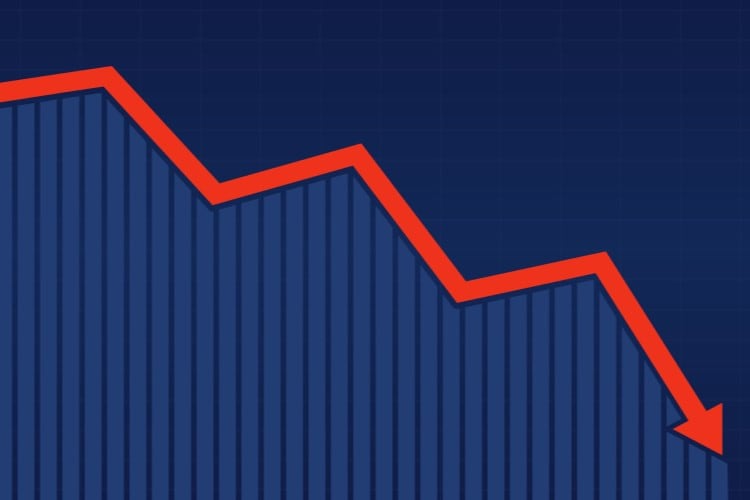According to Nate Donnay of StoneX Financial, Inc., US milk production margins are expected to improve on the back of stronger cheese prices in July and August.
In a webinar dedicated to the outlook of the global dairy market, Donnay said margins in the US had dropped to ‘painful levels’ for farmers, with cheese at under $3,000 per ton this July. “That collapse in commodity prices leads right back to the farmgate and has pushed down milk prices while feed costs remain relatively firm at farm level,” he explained.
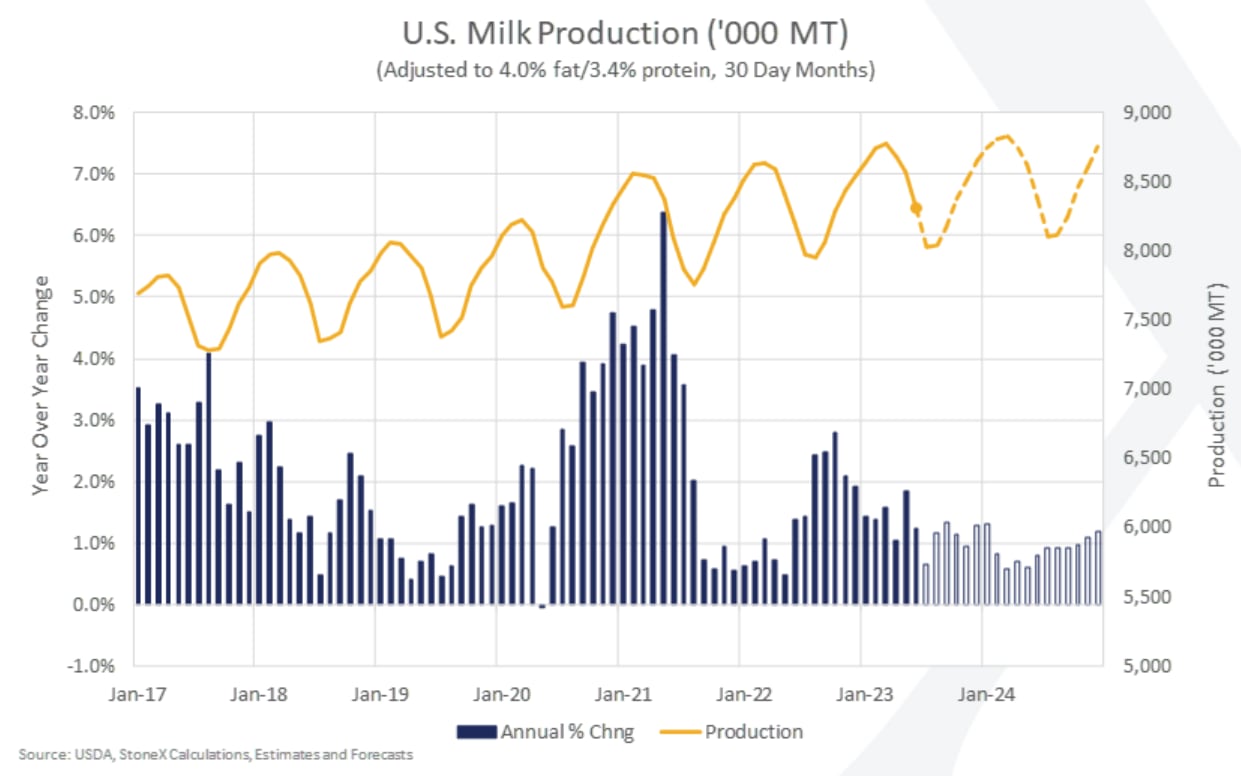
Margins had hit a low point in July following six to eight months of declines, he added. “We should see some improvement with that rebound in cheese prices in July and August.
“Margins are going to get better for US farmers but they are still looking mildly painful throughout the first quarter of next year, and that’s expected to drive a continual decline in the size of the US dairy herd.”
The US dairy herd is already down 36,000 head from the peak, according to the analyst, who said the expectation is that around 8,000 cows will be lost per month until mid-2024. “That would mean something like 125,000 cows over the course of this herd contraction,” he added. “But even with that significant contraction, the herd might be down about 0.5% YOY in Q4.”
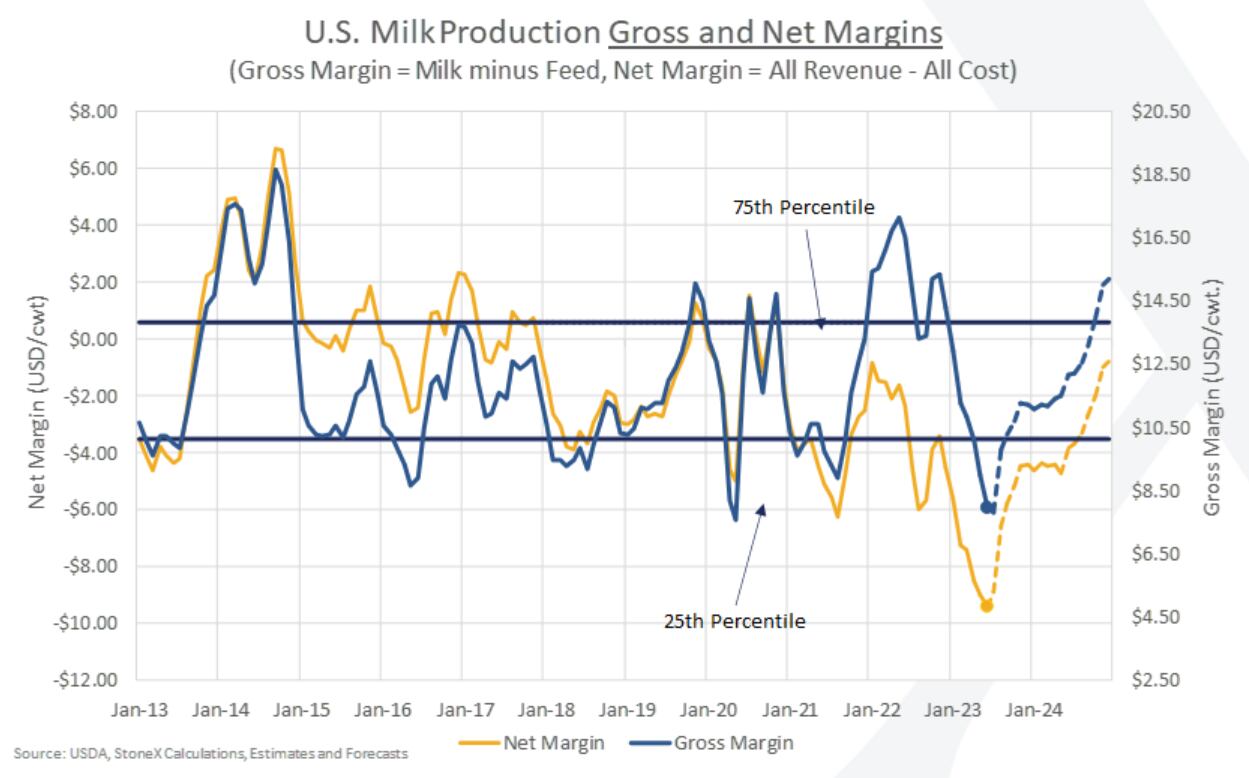
Production per cow is also expected to stay relatively weak. “Recently, production per cow has been running very weak; it was basically flat YOY in June, with the hot weather we had in July and August it wouldn’t be a surprise if production per cow was negative. But the long run, production per cow is 1.1., 1.2% we are already running below trend so you can make an argument for the potential of something like 2% growth in 2024.
The StoneX director of dairy market insight suggested that 1.1%-1.5% would be realistic, alongside continued increases in the amount of fat and protein in the milk. “Which means that while the herd is expected to contract, we will more than make up for it with improved production per cow, and improved component levels in the milk.”
Margins are expected to stay stable enough to negatively affect milk production levels. The adjusted forecast is showing growth through 2024, and there’s a likelihood that production levels could be close to year-ago levels in early 2024.
“The expectation here is that growth rate does slow down,” Donnay said. “We are still expecting some slowdown in the growth in solids in the US; with the herd declining, there is still some worry that production could end up lower than expected.”
Overall, the US dairy market has rallied in the past year, primarily driven by cheese, the analyst explained.
Europe in bearish territory
Elsewhere in the world, there’s been weakness out of Oceania, particularly for New Zealand whole milk powder, while Europe has remained relatively flat.
John Lancaster, head of EU dairy consulting at StoneX Financial Europe S.A., said that some level of volatility is still expected on the inputs side going forward, even if the last couple of months have seen continued pull-back on feed costs. “Versus some of the more average levels, we are still relatively high,” he said,” [but] we are in a much better situation to six months or a year ago.” However, with tensions rising in the Black Sea and Russia refusing to back the grain deal, corn and wheat prices could be at increased risk.
Fuel prices have also rebounded in the last month and a half reaching relatively high levels again, he explained. Possible strike action in Australia, a major exporter of liquified natural gas, stoked fears over global LNG availability and caused European prices to trend up for several days, easing back again last Friday. European gas is expected to trade around €45-€50/$49-$54 over the winter, putting European processors at a disadvantage compared to their US counterparts.
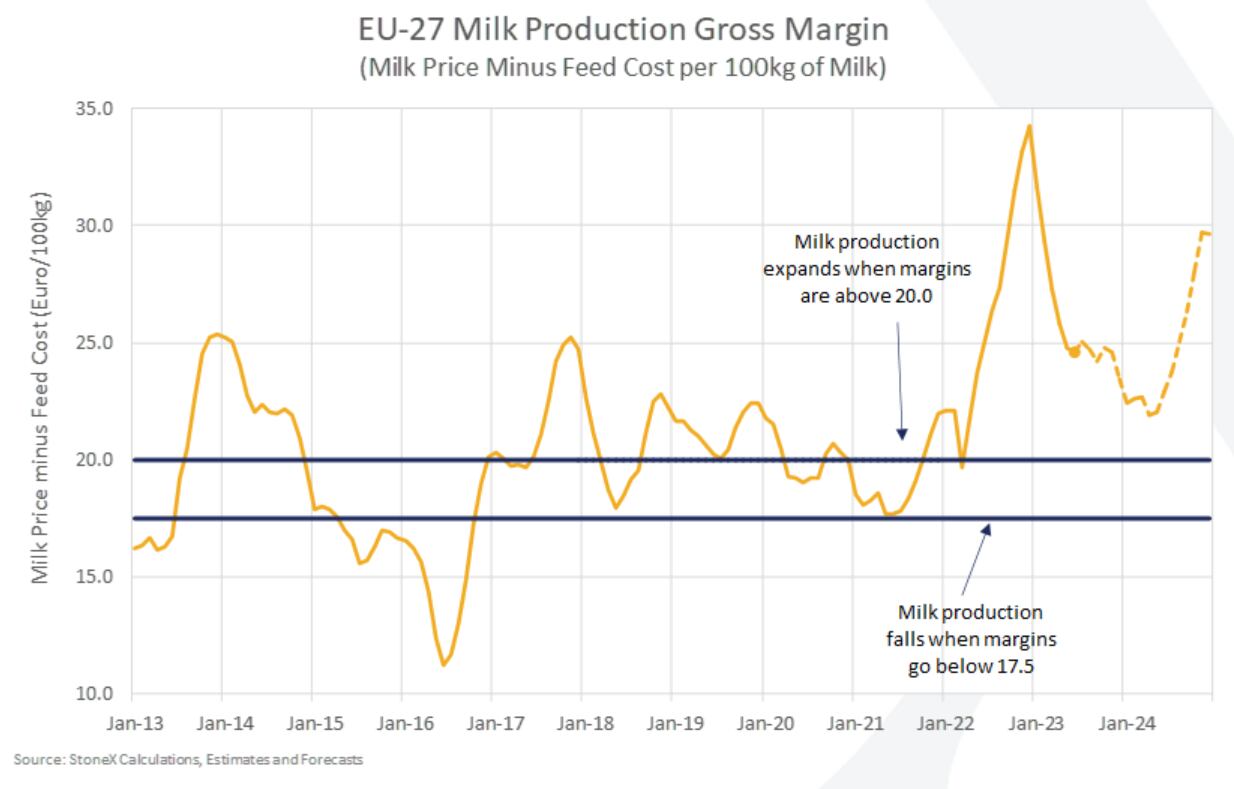
Europe’s competitiveness has also been hurt due to exchange levels that are getting close to parity. “We started the year close to parity, we are moving around the 1.10, 1.11 level [for €1] for the last month or so [on August 15, 2023, the rate stands at 1.09 USD, down from 1.12 on July 15, ed.]. That has reduced the competitiveness of European products as well and made US product more competitive. That looks like it’s going to hold up at these levels,” Lancaster said.
He added that from a farmer’s perspective, margins have dropped off but are looking better than the US. “From a margin-over-feed point of view, wea re looking pretty good right now,” he added, “especially when we compare the US margins.”
But the cost of production varies greatly in Europe, he added, with grass-fed systems such as the Irish in the mid-€30s while more intensive farming likely to stand around low to mid-€40s/$49.
On volume, European Union countries and the UK are running positive YOY for overall milk production. “The expectation is that these YOY gains will finish up as we go into September and October,” said Lancaster. “With the impact of lower milk prices and lower margins on European farmers and also the YOY comparisons getting more difficult with the strong milk production that we had in the fall 2022 due to favorable weather conditions and very good pasture growth combined with very strong milk prices incentivizing farmers.”
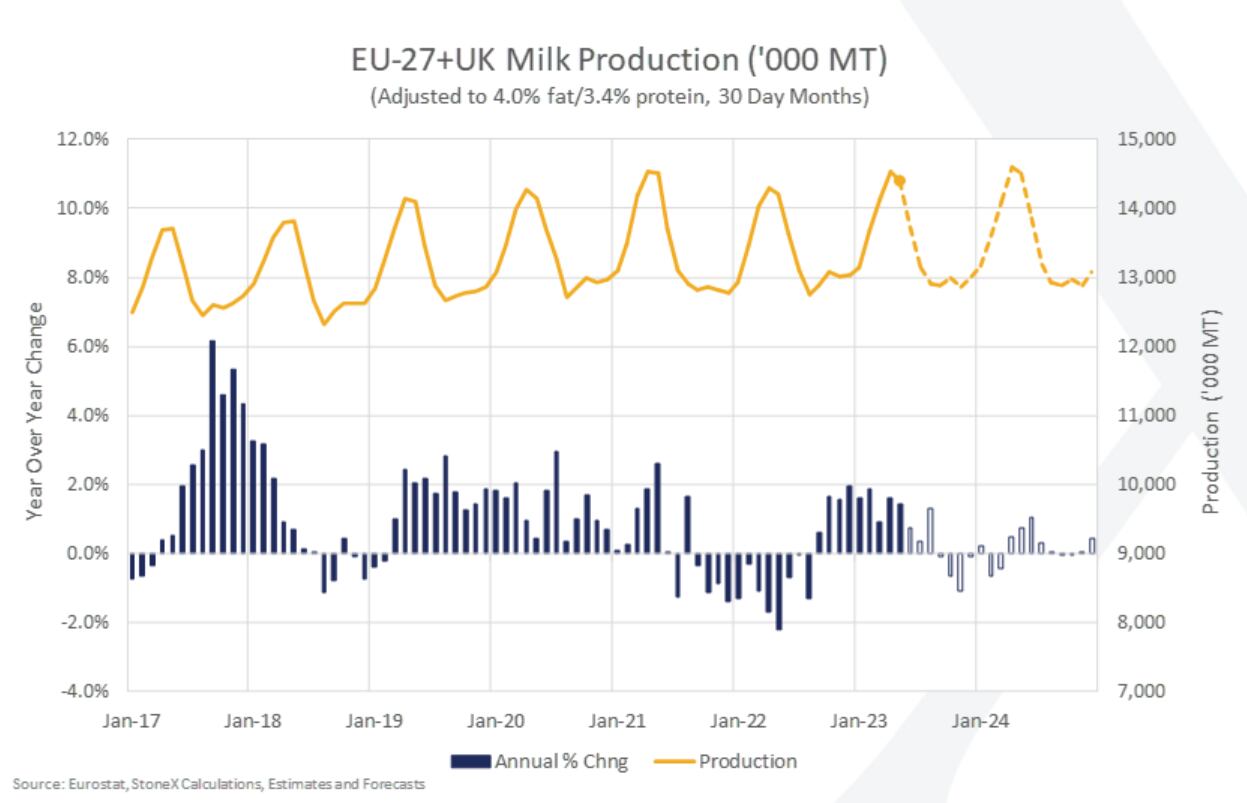
Volume has been holding ‘relatively well’ this summer but the expectation is to move into negative territory over the fall and being down YOY in Q2 2024.
Europe has also been more stable than the US from a product point of view, even if cheaper US prices at the start of the summer had made the export market more competitive – but in the last two weeks, ‘we’ve seen more downward pressure on prices, particularly skim milk powder’, said the analyst. There’s more downward pressure on cheese too, which was trading at €50-75 ($54-$82) per ton. “Forward curves on the cheese are generally more flat than what we are seeing on butters, powder or whey and buyers and sellers are putting the same level of premium into next year,” Lancaster concluded.


